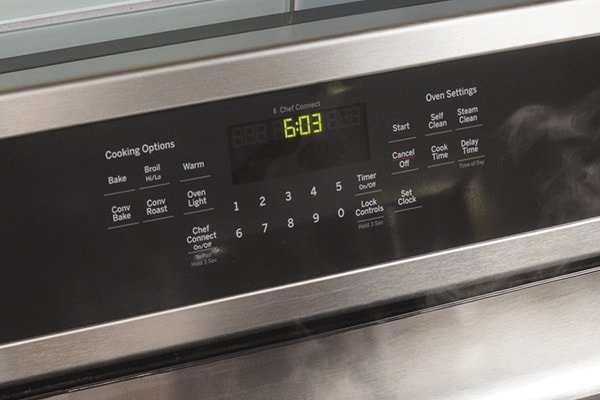
Think of your GE oven like a car. Just like how a car’s check engine light serves as a warning of a potential issue, the F2 code on your oven’s display is a sign that requires your attention. Getting to the bottom of this error and understanding how to reset your appliance can help you get back to cooking those meals without unnecessary stress.
Understanding the F2 Error Code
Before we dive into resetting your oven, it’s important to understand why the F2 error code might appear in the first place. This error typically relates to a problem with the oven’s temperature sensor. Imagine your oven’s sensor as the brain that helps regulate its temperature. When it’s faulty, the oven might think it’s much hotter than it actually is, triggering the F2 code as a sort of “alert” to prevent further issues like overheating.
You might notice that the F2 error pops up when you’re baking or roasting because these modes heavily rely on precise temperatures. It can be quite annoying, but knowing that it’s often just a temperature sensor issue can be somewhat reassuring. In some cases, the sensor might simply be dirty or misplaced, which is akin to having a smudge on your glasses. Cleaning or adjusting it could resolve the issue without the need for major repairs.
If left unchecked, this error could eventually lead to uneven cooking or even potential damage to your oven. So, tackling this issue head-on is crucial, not just for the appliance’s longevity but also for ensuring your culinary creations turn out perfectly every time.
Steps to Safely Reset Your GE Oven or Range
Now that we’ve got a handle on what might be causing the F2 code, let’s walk through how to reset your GE oven or range. First, safety is key. Just like you wouldn’t try to fix a lamp without unplugging it first, you’ll want to ensure that your oven is properly powered down before attempting any reset. Start by turning off the oven and then disconnecting it from the power source—either by unplugging it or switching off the corresponding circuit breaker.
Once the power is off, it’s a good idea to wait a few minutes. This break allows the oven to cool down and its internal systems to reset. Think of it like rebooting your computer—it needs a little time to clear out those glitches.
After a few minutes have passed, restore power to the oven. If the F2 error persists upon restarting, it might be helpful to double-check that the temperature sensor is securely connected and free from any visible damage. You can generally find the sensor inside the oven, protruding from the back wall. If anything looks amiss, like loose wires or visible wear, it may need a closer inspection or replacement.
When to Call for Professional Help
If resetting your oven or checking the temperature sensor doesn’t resolve the F2 error, it might be time to consider bringing in a professional. Just like how you’d call a mechanic for a persistent issue with your car, an experienced appliance technician can diagnose and fix deeper electrical or mechanical issues that a simple reset can’t address.
Remember, sometimes these errors can stem from issues beyond the temperature sensor, such as a malfunctioning control board. Attempting to fix these on your own without the proper expertise could lead to further complications. It’s better to play it safe and get professional help than risk damaging your oven or injuring yourself.
Even though calling in a pro might seem like an inconvenience, it’s often the quickest path back to a fully operational oven. Plus, they can provide further insights or preventative tips, ensuring you can avoid similar issues down the line.
Preventing Future F2 Errors
Once you’ve got your oven working again, it’s wise to take steps to prevent future occurrences of that pesky F2 error. Regular maintenance, much like routine oil changes for your car, can go a long way. Keep the oven free from excessive buildup and routinely check the sensor to ensure it’s clean and properly positioned.
Additionally, try to avoid slamming the oven door, as this can jostle components out of place. When cleaning, use gentle products and methods that won’t damage the oven’s sensitive parts. Finally, consider using a separate oven thermometer to verify that the oven’s temperature readings are accurate, which can help you spot potential issues before they lead to errors.
By taking these preventative measures, not only can you extend the life of your appliance, but you also save yourself from future headaches and disruptions in the kitchen. After all, your oven is a vital part of creating those treasured meals, and keeping it in top shape ensures you can enjoy those moments without a hitch.